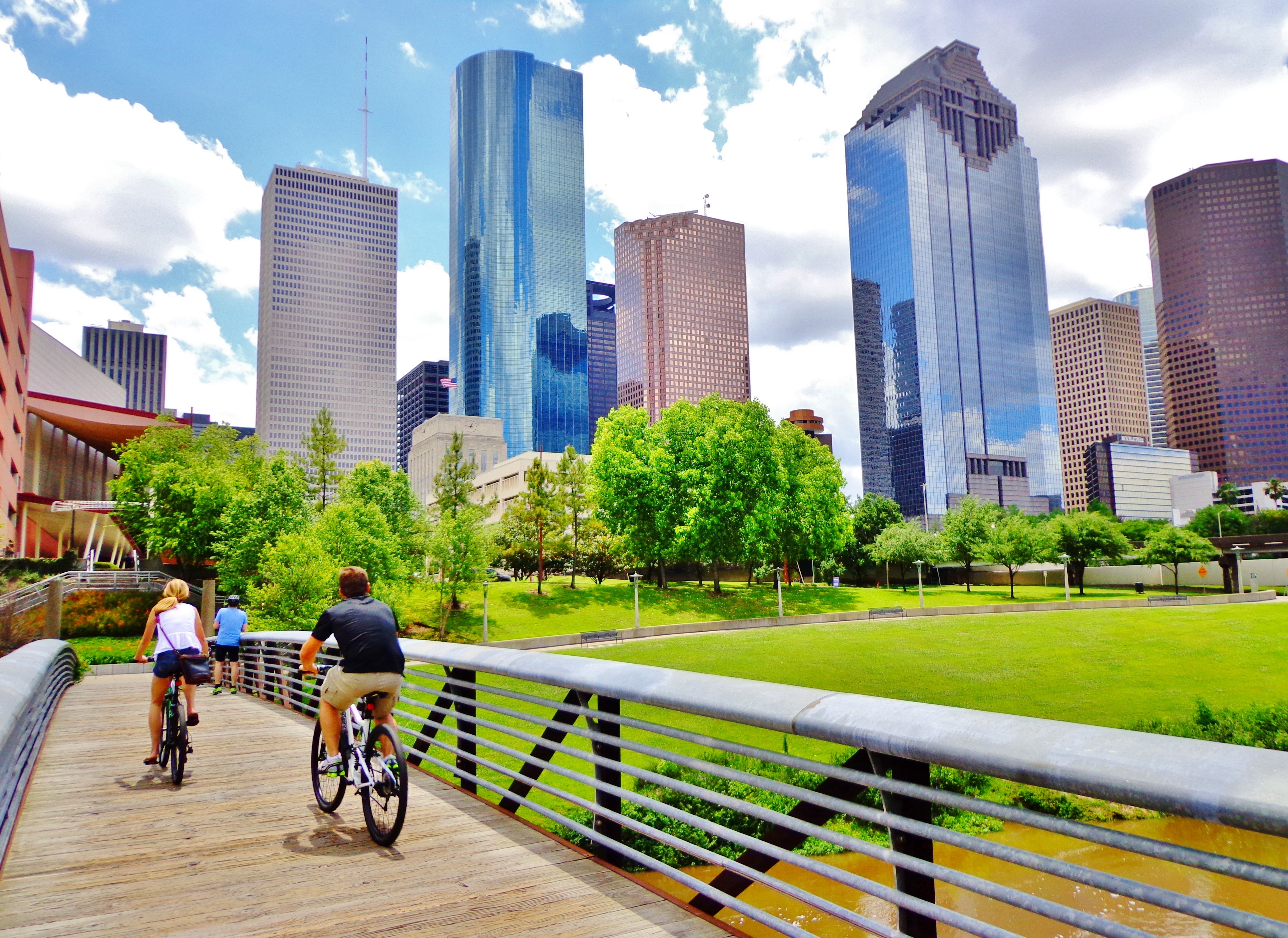2025 has been a unique year for the Houston hospitality and leisure sector, marked by fluctuating KPIs month to month. Year to date, the overall market and many of the outlying submarkets have largely shown year-over-year declines, with pockets of growth for certain segments of travelers.
Hotel Performance
At the mid-way point of 2025, Houston hotel performance overall is marked by declines across all KPIs except average daily rate, which is maintaining marginal growth over last year. Market-wide occupancy through June declined 4.5% over the same period last year, to 61.5%. However, average daily rate, or ADR, is up 4 points, reaching $124. Gains in ADR have helped to soften the declines of RevPAR and revenue amidst a 5.1% decline in demand. RevPAR decreased by less than 1% to $77, while revenue dropped 1.3%.
Though the market overall is showing declines, the Downtown/CBD submarket has maintained growth YTD through June, lifting almost 3% on occupancy to 65% and almost 2% in rate to $231. RevPAR is up 4.6% to $150, while revenue showed a 7.2% gain. The Uptown/Greenway Plaza submarket, in contrast, has shown a 1.4% gain in occupancy and a 2% lift in RevPAR, but, due to a 6.2% decrease in demand, is down in revenue by 5.5% YOY.
Growth and declines in the market are a segmented story across hotel classes, with luxury class hotels showing strong growth through June, while economy and mid-scale class segments have shown significant declines across KPIs, indicating a tightening of purse strings across budget friendly travel sectors.
Visitor Behavior
Houston maintains its position as a major destination for Texas travelers, with visitors from Texas making up more than half of overnight domestic visitors for the first 6 months of the year, according to recent geo-location data. Visitors from the Dallas-Fort Worth-Arlington MSA maintain the highest share of visitation, followed by San Antonio-New Braunfels MSA and Texas regions falling outside a major metropolitan region. Behind Texas, visitors from Louisiana, Florida and California made up the next largest shares of visitation to Houston. Domestic overnight visitors to Houston most frequently visited IAH Airport, which indicates that a solid portion of overnight visitors traveled to the region by air. Behind the airport, travelers visited Southwest Houston (Chinatown), Galveston Island and Washington Avenue.
Though geo-location data shows that IAH maintains the highest share of visitor traffic, air travel for domestic travel through Houston Airports is down 3.5% compared to the same period last year. Hobby Airport has shown the most significant decline, decreasing 8% in domestic passengers through June, while Bush Intercontinental has lost almost 2% of domestic passengers.
Visitors who come to Houston, however, spent more in the first six months of the year than at the same time last year, increasing about 4.3%, according to recent Visa card user data. Visa card user data, though not encompassing all spend in the market, can be used as a barometer for spending habits of visitors. Like the geo-location data, the Dallas-Fort Worth-Arlington MSA represents the largest spend in the region, followed by the Austin-Round Rock-Georgetown MSA. When in market, visitors spend the most on restaurants and dining, followed by retail – both spend categories grew over last year, up 7.4% and 3.5%, respectively.
By contrast, international spending in Houston is down about 1.3% over the same period last year, according to Visa card user data. Retail spend, which represents the largest category of international spend utilizing a Visa credit card in market, is down almost 4% over last year. However, categories like restaurants and dining and hotels and lodging showed a 5.6% and 3.3% respective lift. Top international markets using Visas in Houston include Mexico, Canada and the UK.
Consistent with the Visa data, visitors and locals are enjoying Houston restaurants, according to data from OpenTable. In the first half of the year, restaurant reservations are up 20% compared to the first half of 2024—that’s higher than any other major Texas market.
Visitors play a significant role in the Houston economy, with leisure and hospitality representing the fourth largest nonfarm employment sector in the region, behind professional and business services, government, and healthcare – this is representative of about 378,000 jobs, which is a 1.2% gain over last year and a 10.2% gain over 2019.
Written by Megan Henson


